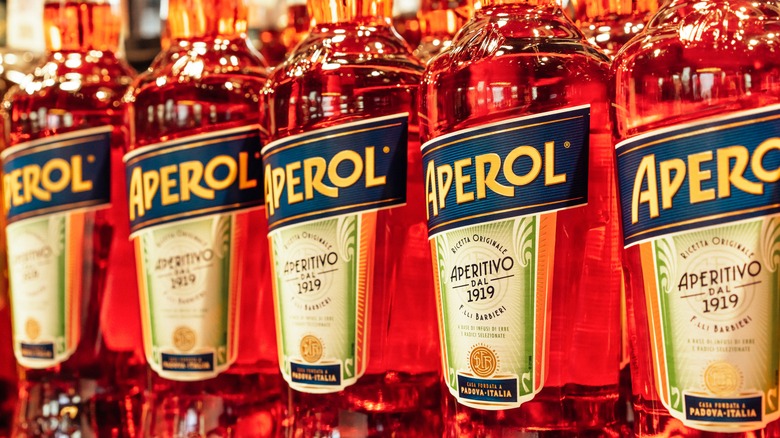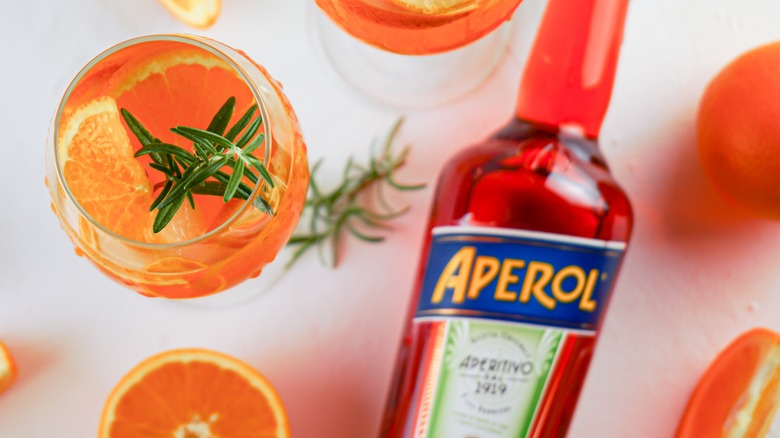The Flavors You're Probably Tasting In Aperol
Since it's not as bitter as Campari, Aperol is commonly mixed with other spirits and mixers to create refreshing cocktails like the Aperol Spritz. The amaro can replace Campari to create a softer Negroni experience, act as a substitute for Cointreau to build a smooth Cosmopolitan, or be splashed into a margarita for a lively impact. Since vibrant Aperol is made up of higher sugar content than other kinds of Amari, the sweet flavor of this Italian liqueur can be more approachable and accessible for drinkers to enjoy and bartenders to use.
While we're not exactly sure what is in Aperol (the recipe is a secret), there are a few ingredients that are known to lend the colorful, bright amaro its taste. As you sip your next drink made with Aperol or sample the colorful liquid straight, get ready to make tasting notes on the interesting flavor profile of this unique libation.
Striving for balance
In addition to flavors derived from orange oils, assorted botanicals, and spicy herbs, attentive drinkers may also detect hints of earthy wood notes and smoky vanilla essence. Rhubarb, gentian root, and quinine add to the bittersweet flavor of Aperol's tasting profile.
While some liqueur connoisseurs use visual cues to conduct and guide Aperol-tasting experiences, other amaro enthusiasts prefer to cut some of Aperol's bittersweetness with bright, fresh ingredients like Prosecco. It can be a tricky task to master, as too much sparkle in the drink can elevate the sweeter notes of Aperol, while not enough spritz can create a drinking experience that presents a taste closer to a medicinal potion than one meant for convivial enjoyment.
Experiment with sampling the liqueur straight or on the rocks, then gradually add your choice of a mixer to Aperol to better understand the variety of tasting elements this flavorful amaro presents.

